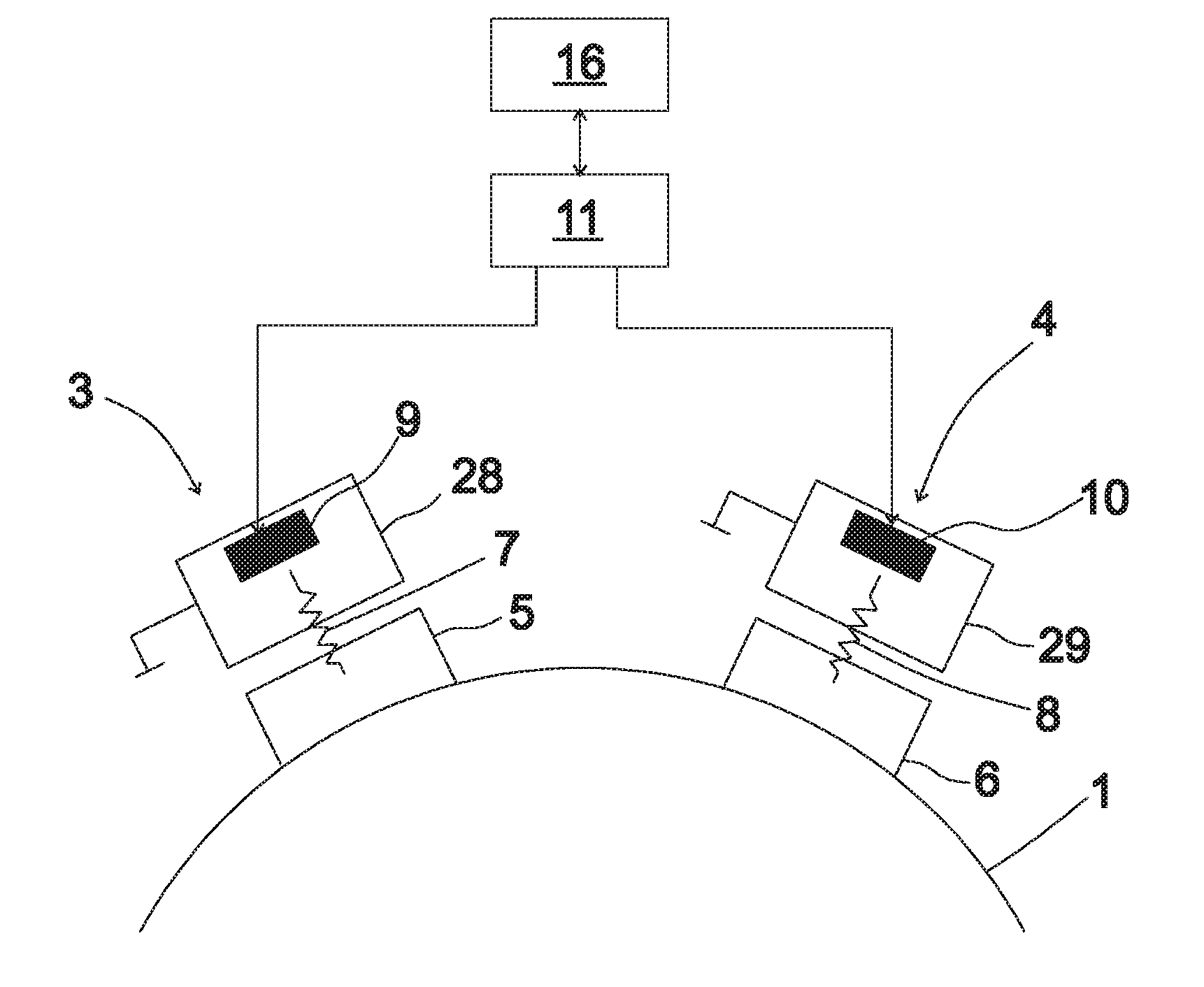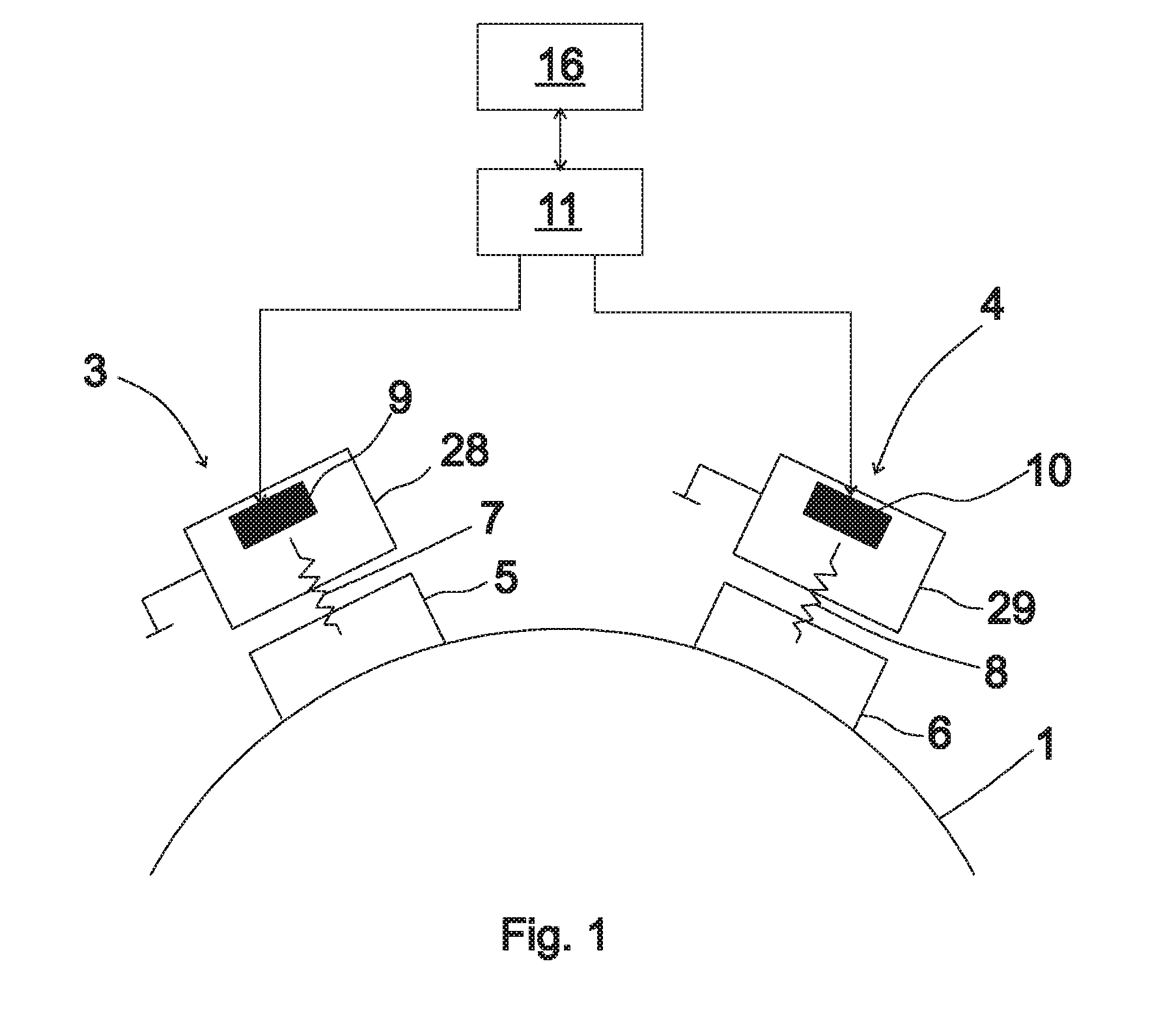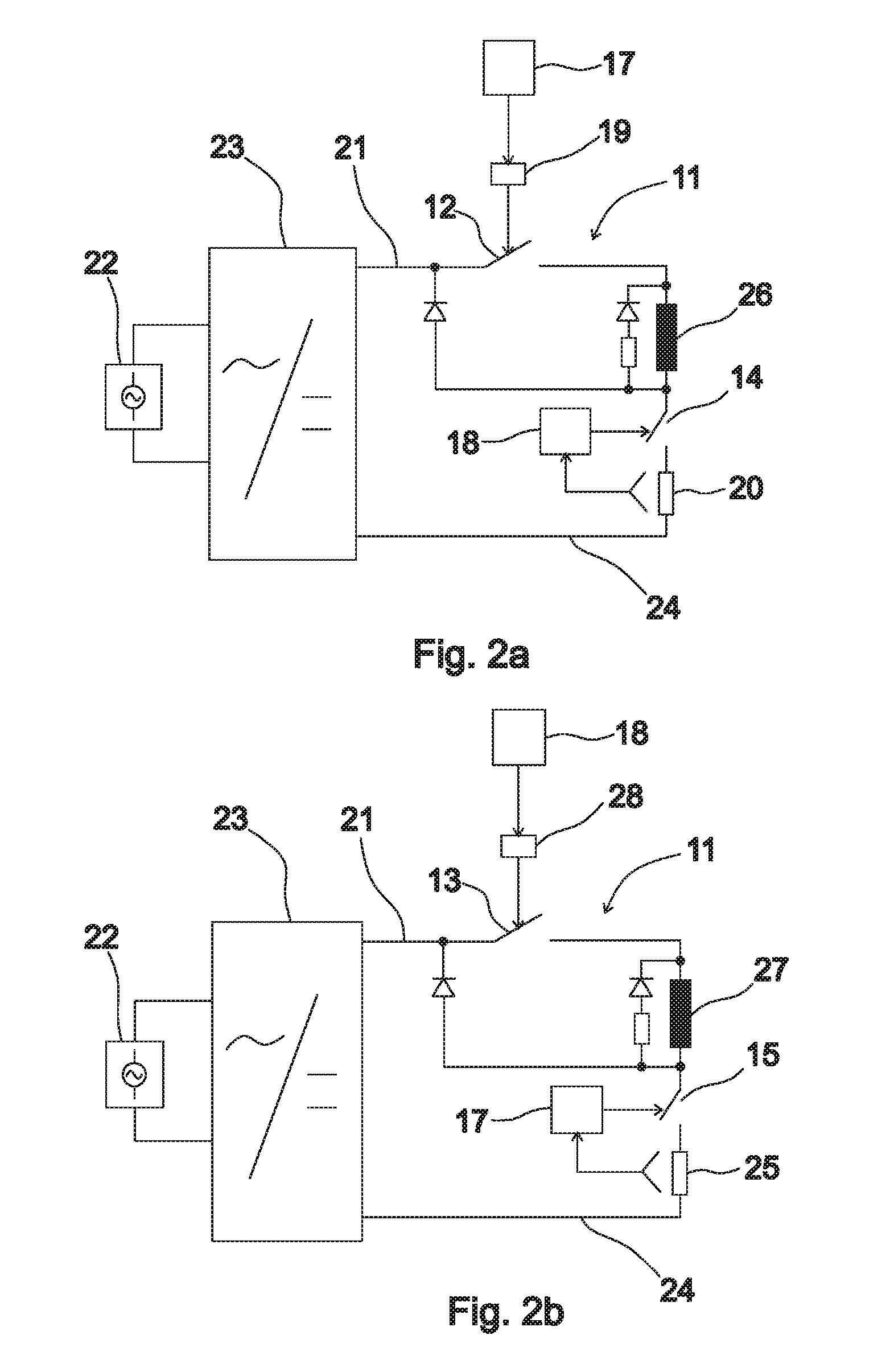Braking apparatus
a technology of braking apparatus and braking device, which is applied in the direction of mechanical apparatus, lifters, transportation and packaging, etc., can solve the problem of preventing the activation of the braking apparatus
- Summary
- Abstract
- Description
- Claims
- Application Information
AI Technical Summary
Benefits of technology
Problems solved by technology
Method used
Image
Examples
Embodiment Construction
[0022]FIG. 1 shows a block diagram representing a braking apparatus according to the invention for an elevator hoisting machine. The rotating part 1 of the elevator hoisting machine comprises a traction sheave with rope grooves for the suspension ropes (not shown in FIG. 1) of the elevator car. The force effect produced by the hoisting machine is transmitted via the suspension ropes to the elevator car as a force moving / supporting the elevator car. The braking apparatus of the hoisting machine comprises two separate brakes 3, 4, the frame parts 28, 29 of both brakes being secured to a stationary part 2 of the same hoisting machine. Each brake has a brake shoe 5, 6 movably attached to the stationary part 28, 29 of the brake by means of spring plates 7,8. The spring plates 7, 8 are push springs and they apply to the brake shoe 5, 6 a force that pushes the brake shoe 5, 6 forwards toward the braking surface of rotating part 1 of the hoisting machine. The brake 3, 4 is in an activated s...
PUM
 Login to View More
Login to View More Abstract
Description
Claims
Application Information
 Login to View More
Login to View More - R&D
- Intellectual Property
- Life Sciences
- Materials
- Tech Scout
- Unparalleled Data Quality
- Higher Quality Content
- 60% Fewer Hallucinations
Browse by: Latest US Patents, China's latest patents, Technical Efficacy Thesaurus, Application Domain, Technology Topic, Popular Technical Reports.
© 2025 PatSnap. All rights reserved.Legal|Privacy policy|Modern Slavery Act Transparency Statement|Sitemap|About US| Contact US: help@patsnap.com



